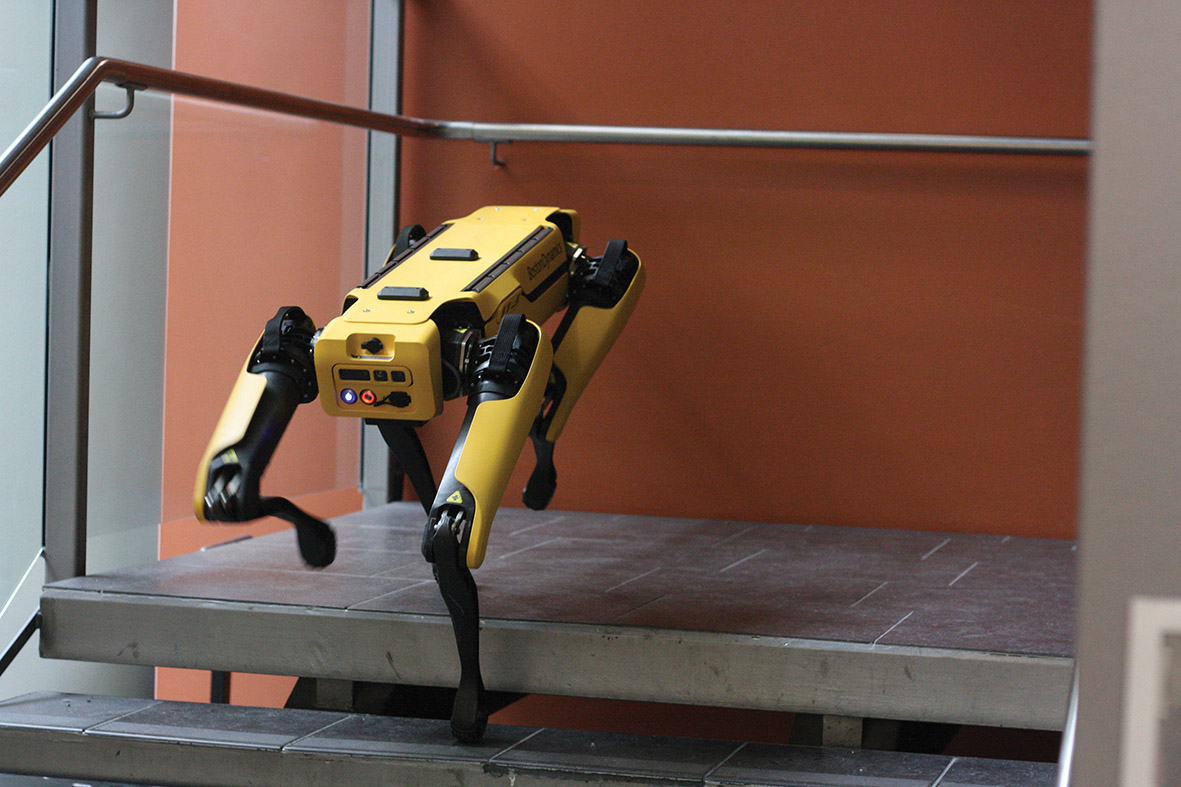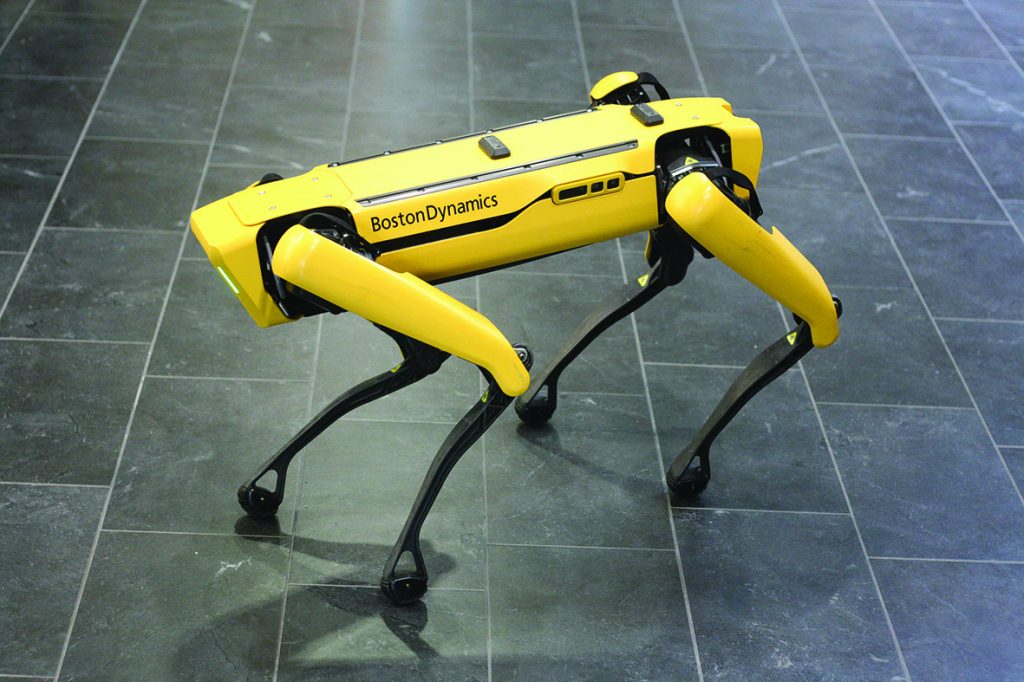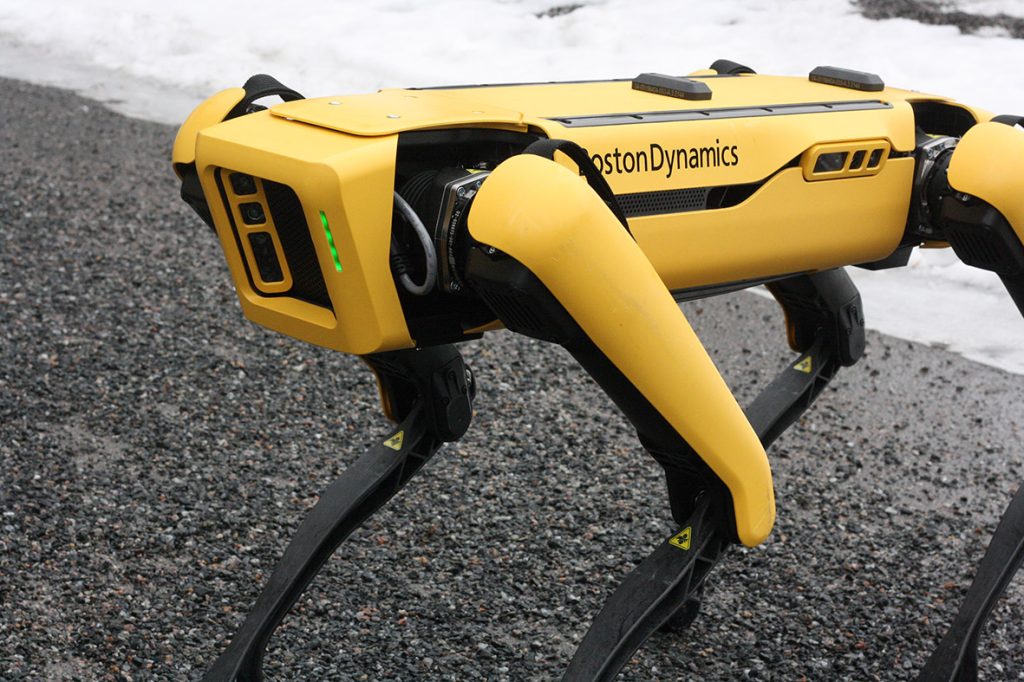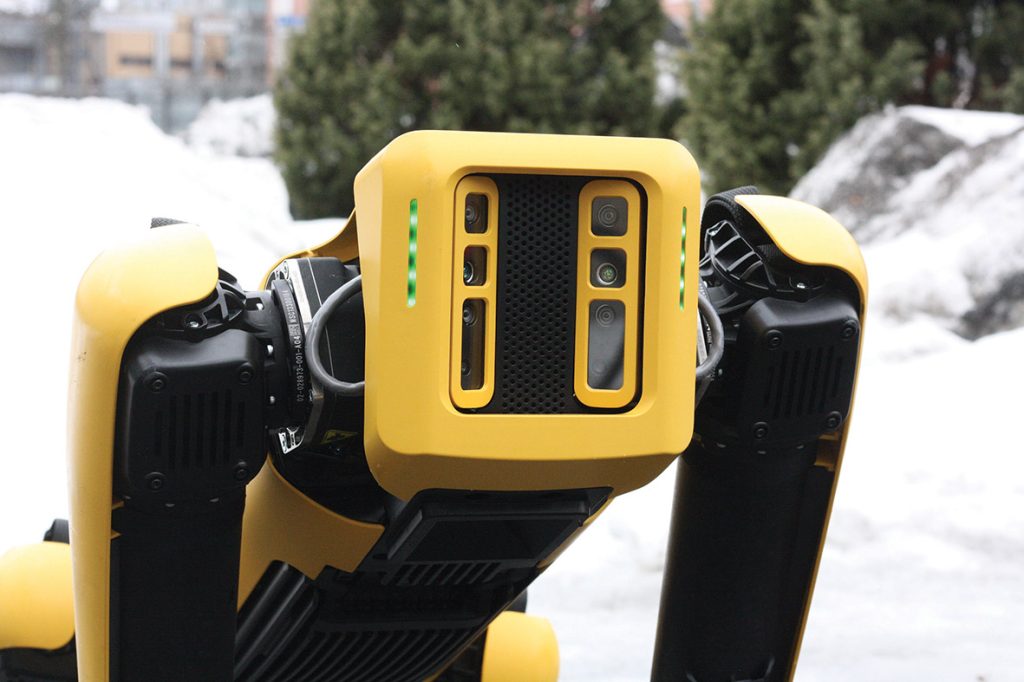Hervanta got itself a new, expensive friend – Meet Spot the robo-dog
The newest addition to the Robostudio equipment at Hervanta campus of Tampere University is a robotic dog, in which the university spent more than 100,000 euros on. We took Tassu for a walk and became familiar with the operations of Robostudio.
Original text and pictures: Ilari Hauhia
Translation: Kiia Saarenpää

The Robostudio at Hervanta campus got a new addition to its family at the end of last year. Spot the robot dog, manufactured by the American robotics company Boston Dynamics, arrived in Hervanta in October.
Spot might be one of the most well-known and the most sophisticated robots out there. It moves on four legs which is in and of itself a huge leap in robotics – walking is not the easiest task for robots.
Hervanta’s Spot robot dog was named Tassu (a very typical name for a dog, means ”paw” in Finnish) as a result of the naming competition.
Tassu is not the most affordable pet there is, that is for sure. Spot cost over 100,000 euros to university. According to Aino Ahtinen, the person organising the activities of Robostudio, Tassu was paid for by the Tampere University’s investment programme.
According to Ahtinen the investment has proven to be a success.
”Tassu is by far the most capable of our robots since it can move around properly, and it can also be used outside. In addition, it is interesting to all target groups. Because of these reasons numerous research teams and training programmes can utilise Tassu in their activities.”
Spot the robot has been designed to assist people on construction sites, for example, where it can carry things around or work independently as a moving camera or as other sensor. In addition, Spot has been developed to work as an assistant for rescuers working in difficult places. The robot could also be used in all environments, where having four legs works better than having wheels.

According to the researcher Chia-Hsin Wu working at the Robostudio, Spot is currently being used to study human-robot interaction at the Tampere University. The robot has been used to study if it could inspire and encourage older people to move more, among other things, and whether robots could function as a kind of pets in the future, especially for those who, for one reason or another, cannot keep an ordinary pet.
”It has been a joy working with Tassu, as you can also leave the classroom with this highly mobile robot,” Wu says.
Wu tells us that older people have been really excited about the four-legged robot. In addition, the robot dog has been used to entertain children: the children have even challenged the robot to a push-up competition. It may be that in future physical education classes, children will be taught and inspired by robots, along with teachers.

BALANCING the steps requires complex computation, which only few robots can do. Even more challenging is walking on varied and slippery terrain, not to mention climbing stairs.
We put Tassu’s skills to the test on a short walk.
A camera located at the end of the robot dog is controlled by a small tablet and it sends real-time live images to the tablet. The dog is controlled virtually by using thumb sticks and buttons and the robot is easy to control even without previous experience. If necessary, Spot could also walk independently along a pre-programmed route.
We started our walk by climbing the stairs of Tietotalo to the second floor and returned down the same stairs. Tassu climbed the stairs forwards and backwards with ease.
After the stairs we continued our way along the corridor in Tietotalo and to the front doors waiting at the end. It would be possible to attach an add-on auxiliary hand to Spot so that the robot could open doors independently. Tampere University model does not have one installed for price reasons: a robotic hand would cost more than 30,000 euros extra. The robot dog is not yet a very affordable pet.
When a helpful passerby opened the door for our yellow dog friend, Tassu was able to enjoy some fresh air. Not even slippery slush or sinking snowfall could cause any problems for it. When one leg hit a slippery spot on the road by accident, the robot was able to recover after a slip independently without slowing down its walking pace.
This four-legged friend doesn’t make any waste that should be scooped up in a dog waste bag. After taking a few pictures we made our way back inside to Tietotalo.
A robot dog running down the hallway of Tietotalo turned a lot of students’ and staff’s heads. At Hertsi, a group of people gathered around Tassu, and the robo-dog was able to entertain the audience with its pre-programmed dance choreography. Spot’s battery could easily last for two hours, but we settled for a shorter walk this time around.
Although Spot is a very advanced robot, it was very easy to use, a bit like driving a radio-controlled car. Practically anyone could surely control Tassu after a short introduction to the controls.
In the future, interacting with robots may be even more natural than before. The physical characteristics of advanced language models such as Chat GPT can be combined with comprehensive communication capabilities.

IN ADDITION to Spot, the Robostudio at the Hervanta campus has other robots as well that can be used to teach children the basics of programming. However, security regulations have tightened for robots, and nowadays the rules are very strict about robots not being allowed to send data outside Europe. Therefore, older robots purchased from China have been largely decommissioned and their cameras have been covered with tape.
The goal of Robostudio is to provide a modern environment for experimenting and learning about robotics and other related technologies.
The hardware of the laboratories at the Tampere University covers industrial robotics, mobile robotics, as well as a wide range of sensors, AR/VR technology and workstations. After a short introduction, you can work independently with the robots.
Students can also get to know Spot and other robots at Robostudio in the university courses. According to Wu, the best place to start is the User Experience in Robotics course, which takes place in the autumn, where students get to know social robots and their user experiences in a comprehensive way. In addition, a robotics-focused line of Master of Science in Engineering degree programme will begin at the Tampere University in the autumn.